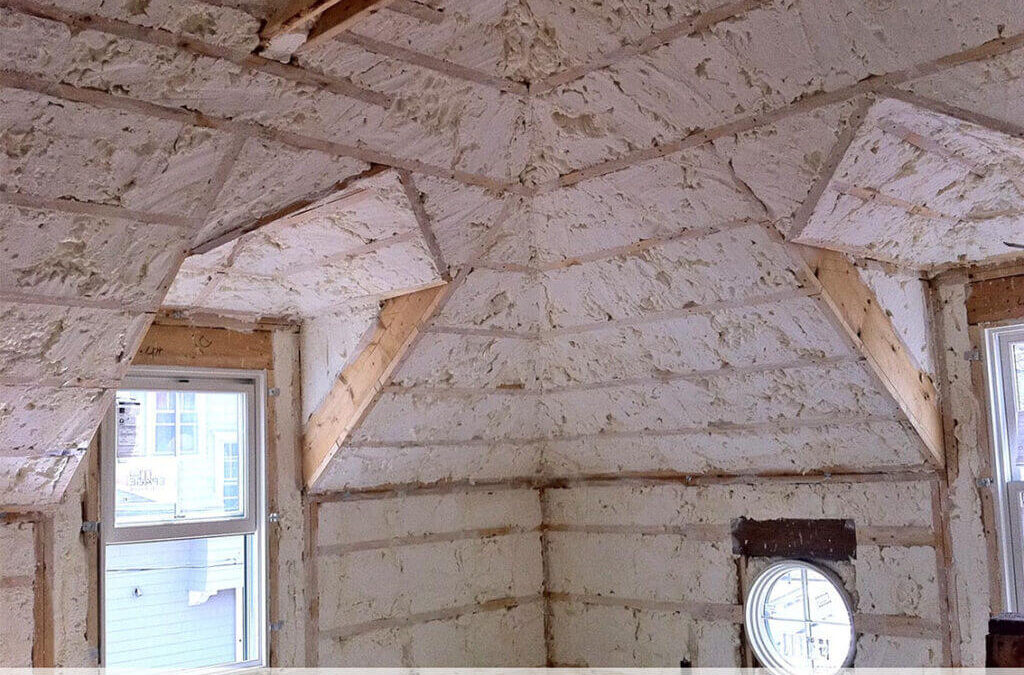Many people are asking themselves two questions given the current state of the world: “How can I can money during the recession?” and “How can I reduce my carbon footprint given the disturbing changes many are seeing in the global environment?”
Here are some answers: Buildings use more energy than any other segment of the marketplace, including transportation and manufacturing so being sustainable starts at home. When a homeowner undertakes a renovation, using the best insulation in the walls and roof that is available is usually an excellent financial decision. In an environment where one is getting 1% on cash, saving just $100 per month on heating and cooling is the equivalent of getting a lump sum of $120,000! Most insulation projects cover their cost in saving in three to ten years, which represents an excellent return on investment. Because of the importance of designing buildings to be as energy-efficient as possible, the American Institute of Architects has issued the “2030 Challenge” to its members to try to have all new buildings designed to be carbon neutral by the year 2030, and members are rising to that challenge by utilizing new technologies.
If your old furnace is in need of repair consider putting in a high-efficiency condensing boiler. These can be as much as 97% efficient and therefore cost less to operate and send less partially burned by-products into the atmosphere. Perhaps even more sustainable are geothermal heat pumps which use the latent heat already existing in the ground below your house to both heat and cool, rather than getting that energy from petroleum products that have been shipped across the world at great expense and energy and which produce the carbon dioxide byproduct which is dramatically changing conditions on the planet we live on. There are currently many programs to help homeowners pay for, or get rebates for, implementing new energy-efficient systems in their homes.
Another thing that can be done to build for the long term, is to employ high-quality materials and high energy-efficient appliances, which may cost just slightly more than shorter-lived and less efficient products. Look for the “Energy Star” label when you are upgrading an appliance and ask about the maintenance requirements for other goods. The less frequently a product needs to be replaced the less energy is used in making new products and disposing of old ones.
Perhaps the best way to be more energy efficient is to live in an urban area, like Newport. Cities, because so much more can be accomplished on foot or by bike, are frequently three times more efficient in terms of the amount of energy spent on transportation. The tenants of thriftiness, which caused the early settlers of Newport to build compact houses close to the stores and workplaces, are coming back into vogue both for economic reasons but also because people are rediscovering the pleasures of being able to live, work and shop without traveling long distances and getting stuck for indeterminate periods of time in traffic.
It is not just enough to say that it is ecologically beneficial for people to live in cities but it is important to make those cities fun to live in. On October 19 and 20, Newport citizens will have the opportunity to weigh-in on how to make Washington Square, the traditional civic and commercial center of the city better. Please come to the Washington Square Community Charrette to learn about the area’s past, consider its present, and plan for its future. Register your interest by sending an email to [email protected].
Looking to remodel your home? Let’s connect.
Join the Architectural Forum to stay up-to-date with architectural news from Rhode Island and abroad.
Prior to becoming an architect Ross Sinclair Cann, AIA, LEED AP, studied Molecular Biophysics at Yale. Today, he is a historian, educator, and practicing architect living and working in Newport and serves on the Washington Square Roots Initiative and on the Washington Square Advisory Commission which helped envision, raise money for, and oversee the implementation of the recent pedestrian improvements in the area. This article was initially published in ARCHI-TEXT, in Newport This Week, September 3, 2012.
